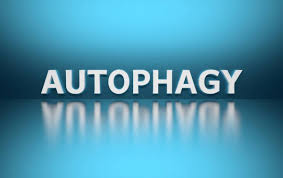Coronaviruses are a group of enveloped RNA viruses carrying petal or club-shaped peplomers on their surface.
These viruses were originally found in veterinary, So this virus is zoonotic i.e this virus is transmitted to human beings from animals.
Human coronaviruses
It was first isolated from a case of the common cold by inoculating organ culture.
(Viruses can't be grown on any inanimate culture medium)
Types:-
There are so many serotypes of coronavirus is recognized.
Incubation period:-
Generally 2-5 days.
Mode of transmission:-
Aerosol, droplets from the nasopharynx.
Coronaviruses are also found in human feces.
Pathogenicity:-
Inhibition of ciliary motility and its growth of nasopharyngeal and respiratory tract cilia.
Signs and symptoms:-
In minor disease:-
Cough
Sore throat
Fever
common cold
diarrhea
difficulty in breathing
Fatigue, weakness
Headache
Loss of taste or smell etc.
In fulminant disease:-
Severe cough with black sputum
Breathlessness
Fall in oxygen saturation
Severe weakness, patients unable to walk and go upstairs.
Risk factors:-
The individual associated with the following diseases is predisposed to get infected with these viruses.
Cancer patients
Heart diseases
Chronic kidney diseases
Chronic obstructive pulmonary disease
Obesity
Immunodeficiency diseases
Diabetes
Pregnancy
Diagnosis:-
PCR and ELISA
Treatment:-
Generally, symptomatic treatment is given in minor diseases:-
Antipyretics
Oxygen
Nebulization
Few antiviral drugs
Steroids
Antibiotics only to prevent secondary infection with bacteria.
Symptomatic patients should be kept under medical professionals' supervision. Sometimes ventilator is required.
Prevention:-
Sanitization.
Washing hands frequently and disinfecting surfaces are the most important preventive measures. Wearing a mask, keeping a distance from the infectious people, and avoiding crowding may help to prevent the transmission of viruses.
The most active antiviral disinfectants are:
Oxidizing agent:
hydrogen peroxide
Potassium permanganate
Hypochlorite
Virucidal agent:
Iodine
Chlorine ( chlorinated water)
Viruses are also inactivated by sunlight, UV rays, and ionizing radiations.
Development of immunity against viruses after infection is poor and reinfection can occur even with the same serotype.
Prophylaxis:-
Vaccines
Health Disclaimer
This blog gives general information and discussions about prosperity and related subjects. The information and different substances are given in this blog, or in any associated materials, are not arranged and should not be deciphered as clinical guidance, nor is the information a substitute for capable clinical capacity or treatment.
If you or some other individual has a clinical concern, you should converse with your clinical consideration provider or search for other clinical treatment. Never disregard capable clinical direction or delay in searching for it because of something that has been examined on this blog or in any associated materials. If you figure you might have a wellbeing-related emergency, call your family physician or emergency helps immediately.
The sentiments and points of view imparted on this blog and webpage have no association with those of any academic, clinical center, prosperity practice, or other association.
Reference:
Textbook of Microbiology
R Ananthanarayan
C k Jayaram Paniker sixth edition







No comments:
Post a Comment
If you have any comment regarding my blog please let me know